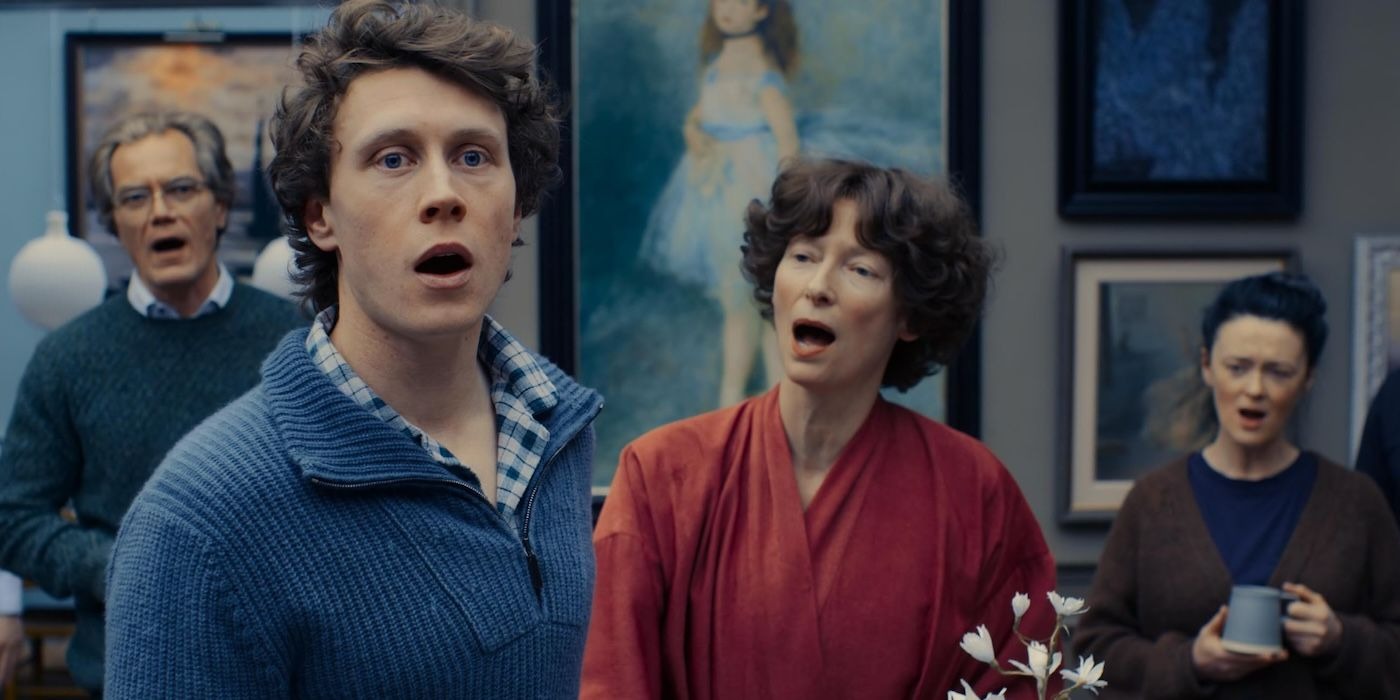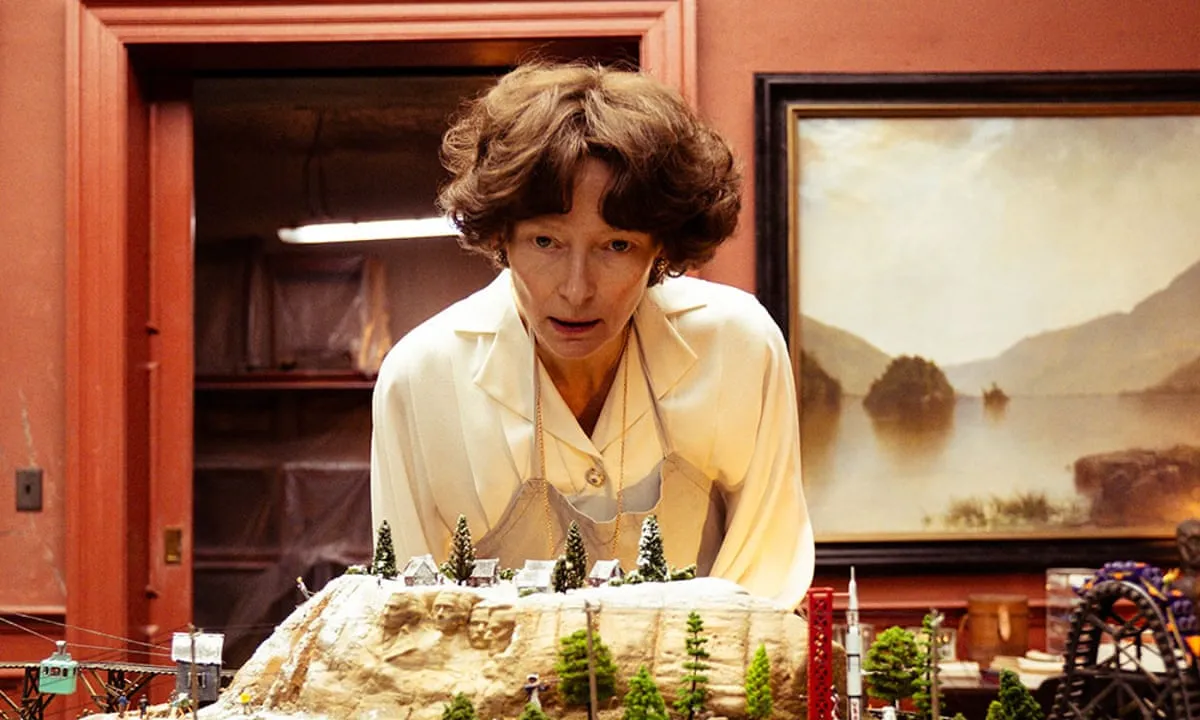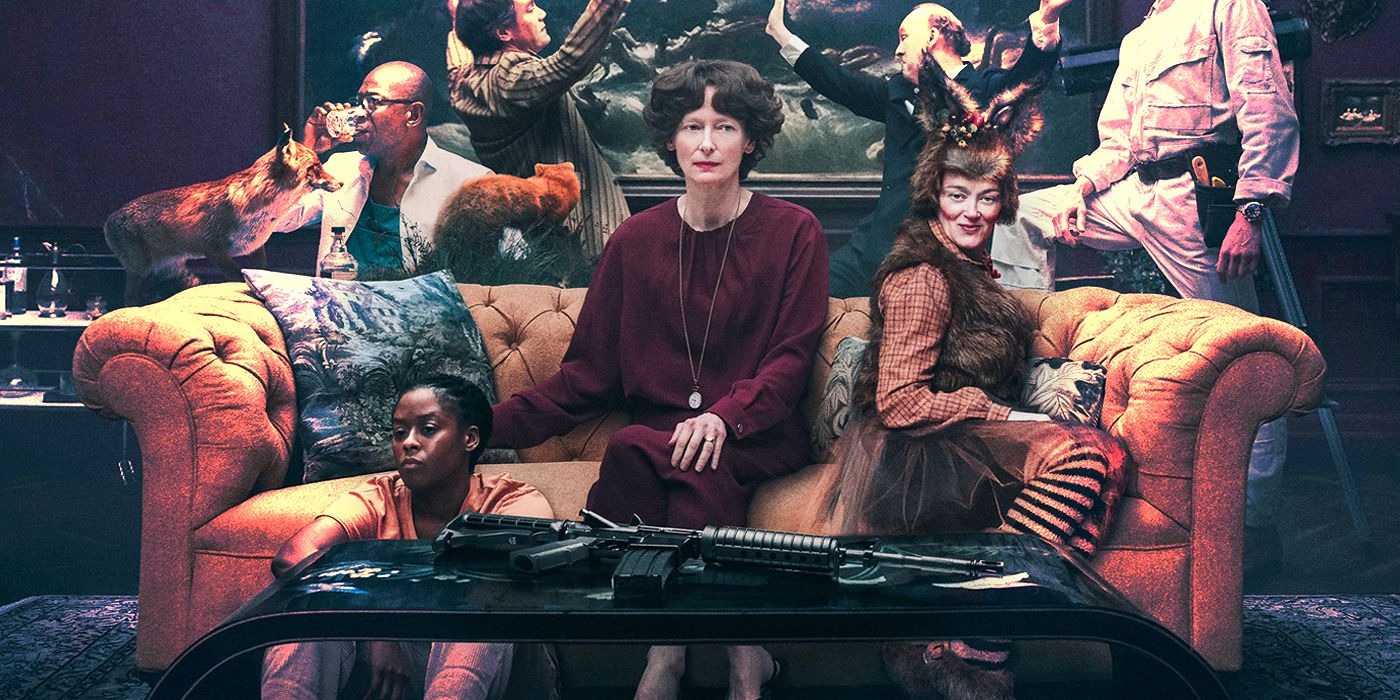Joshua Oppenheimer’s The End brings to light a reality where a privileged family lives in an isolated world. Everyone is trapped in an underground bunker due to the chaos of the outside world. The family, deluded and surrounded by their fantasies, includes individuals like Michael Shannon, who plays an oil baron.
The setting is dark, grim, and twisted. The characters are caught in their delusions, especially the mother (Tilda Swinton) and son (George MacKay), whose awkwardness and sheltered existence reflect the isolation and madness they are in.

Despite the absurdity of their world, the family remains in denial, creating a deeply unsettling atmosphere. The introduction of a stranger, played by Moses Ingram, disrupts the stagnant world the family has built. She represents hope, liberation, and power, things they’ve long been denied.
Her presence challenges everything the family stands for, especially as the son has been watching her with a strange mixture of affection and detachment. The introduction of this character pushes the boundaries of the family’s insulated world, shattering any remaining hopes they had of maintaining their delusional existence.
Ingram’s character is a stark reminder that there are forces outside their control, and her very existence begins to unravel the fragile structure they’ve built.
A Cyclical Ending: The End is the Beginning
The concluding moments of The End reveal the futility of the family’s struggles. What was once seen as a place of safety, the bunker becomes just another environment where history keeps repeating itself. The recurring image of a toy train running in a circle symbolizes this endless cycle.
Despite their efforts, the family is unable to escape their past, trapped in the same old patterns. The cycle of “the end is the beginning is the end” offers a pessimistic view of mankind’s future, suggesting that history is bound to repeat itself.
This repetitive ending aligns with the central message of the film: those who cause the most harm are often the least capable of change. This flaw is evident throughout the film, as the characters continue to move blame and guilt onto one another, sinking deeper into despair, unable to break free.
Where Characters Go to Die
Both the son and the stranger appear to have growth potential, yet they remain stagnated, much like the rest of the family. The mother clings to her fantasies, while the father shirks his responsibilities. This refusal to change leads to an unsatisfying and anticlimactic conclusion.
Brief moments of hope, such as the son’s curiosity and the stranger’s presence, fail to withstand the family’s denial. The lack of transformation leaves the audience with a sense of indifference, as nothing meaningful seems to change by the end.
The film’s focus on stubbornness and its destructive effects on the characters’ lives cannot be easily dismissed. However, this approach also limits the depth of the story. The absence of important character development towards the end is a missed opportunity that could have made the film more engaging.
The Musical Element: An Aspect Not Fully Explored
In most films, music reveals the subconscious of the characters, but in The End, this element is underused. There are a few moments, like when Tilda Swinton reflects on her deceased mother or when Michael Shannon opens up emotionally, where the music adds depth.

However, these moments are rare and don’t drive the story forward. The songs, while occasionally poignant, don’t contribute to a satisfying conclusion. Instead, they are just fleeting symbols that feel disconnected from the broader story.
The End: Technical Brilliance, Story Stagnation
From a technical standpoint, The End excels at creating a confined and oppressive atmosphere. The bunker is designed to restrict the audience’s emotional engagement, reflecting the family’s isolation. While it draws inspiration from Bob Fosse’s minimalist style, it serves to heighten the feeling of entrapment.
However, despite the film’s technical strength, it is marred by poorly executed editing and disjointed transitions in its final act. These issues disrupt the flow of the story, leaving it feeling disconnected. The film’s unwillingness to summarize the film’s themes of monotony and despair.
While the film presents a biting satire on the apathy of the elite and comments on humanity’s cyclical nature of self-destruction, it fails to offer any important emotional or story progression.
The film’s unwillingness to move beyond its starting point results in a lack of closure, leaving the audience with a sense of unresolved tension.
Instead of providing a thought-provoking and impactful conclusion, The End only scratches the surface of the human experience, focusing on violence and destruction without delving deeper into the complexity of its characters’ lives.



